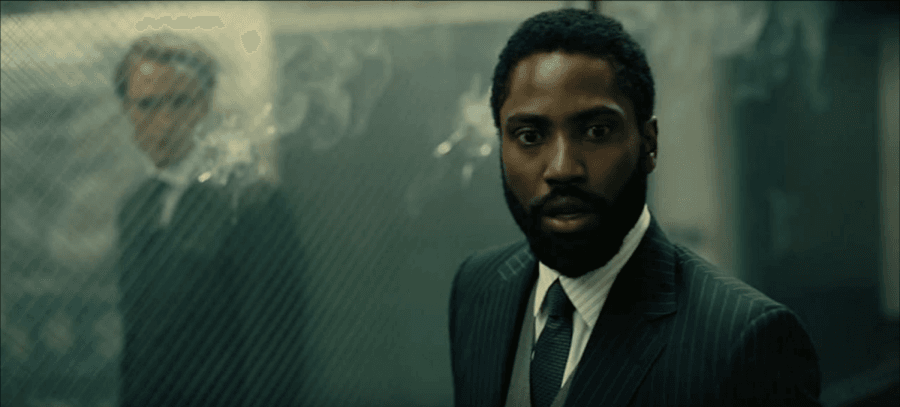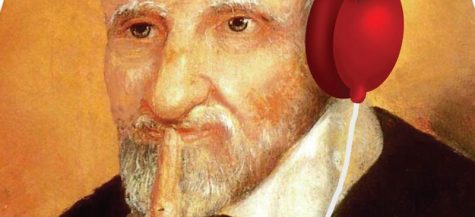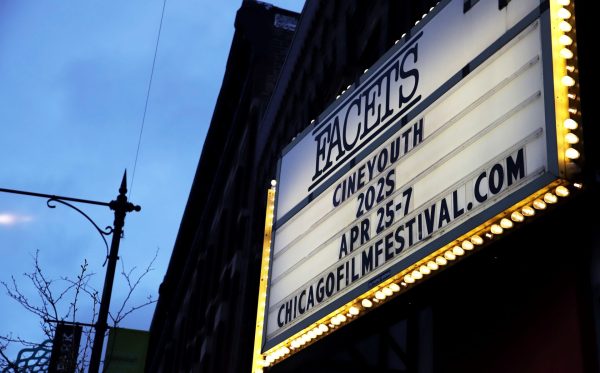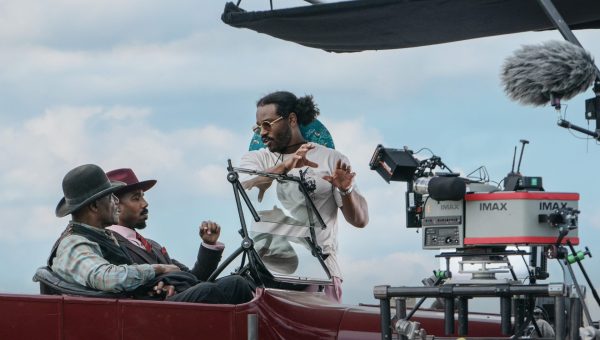REVIEW: In conversation with ‘Tenet’ star John David Washington
Still of John David Washington in “Tenet,” directed by Christopher Nolan.
“Tenet” opens with an opera house heist mission. The packed, maskless audience on-screen makes for an apprehensive mood within the Covid context. An interesting duality that only presents itself when I am socially-distanced and masked-up, hoping that any other ironic imagery doesn’t suck me out of this time-warping, sci-fi thriller.
“Tenet” is Christopher Nolan’s inverse take on the spy genre, with John David Washington starring as The Protagonist, a CIA agent tasked with preventing World War 3 by means of stopping the Algorithm, which has some monumental stakes. But what does inverting the whole world mean?
If you’ve seen Christopher Nolan’s “Inception,” the layers of complexity to the distorted laws of physics and gravity are about the same. Instead of dreams, time is the primary motif here, but in a much different way than “Inception” and Nolan’s previous film, “Dunkirk.” Time can be your friend just as easily as it can be your enemy, something that The Protagonist slowly begins to realize.
What keeps “Tenet” freshly innovative is the aforementioned 007 approach, requiring the actors to adhere to both the inverse sci-fi physics and the dynamic journey that their character embarks on. Having to choreograph one fight becomes two with time inversion. Two becomes four, four becomes eight, all the while eight corresponding performances and narratives are tied to these as well. It seems to have just been an exhausting process, especially when considering Nolan’s calculated insistence on practical effects (which paid off as always).
What looked to be intricately grueling ended up being rather invigorating for lead actor John David Washington, whose performance pushed his physical and mental limits further than ever before, starting with the first time he read the script. I got the chance to have some digital discourse with John David, who reflected on everything from understanding the puzzle of a screenplay to encountering his fear of heights when jumping off a highrise in Mumbai with co-star Robert Pattinson.
“This script took me four hours to read,” Washington said. “I’d read ten pages and go back five, read fifteen and go back ten. It was such a high-concept and trying to visualize it as I read it, my mind kept getting blown. How are we going to do this? How did he come up with this? I was keeping up with writer/director Christopher Nolan the entire time we were shooting. We had a great foundation to build on creatively. I want to do this [press] again in two weeks when I can see it twice more, and I can be more confident with my answers.”
Preparing your lines, inflections and gestures is just a tease when compared to some of the meticulous physicality that John David endured from Nolan’s vision. John David being the record-holder for rushing yards at Morehouse College certainly helps, as the football star turned actor clearly had the job experience to take on this role.
“With football I operate with the laws of physics and gravity,” Washington said. “All of that is being blown up in a concept like this. Learning to blink, talk, fight, walk and run in the inverted world made it extremely difficult. At times, the character hasn’t seen this kind of movement, it’s alien-like. Having to play into that while I do know the choreography and my character doesn’t. My body didn’t enjoy the process but I did!”
In “Tenet,” the inverse time theory is perceived by our eyes and discerned by our brains in real-time, with the camera placements putting you front and center for the action. But the impressive cinematography would mean nothing without an actor’s choreography, which Washington and Pattinson deliver on in the film’s immersive moments.
Director of Photography Hoyte Van Hoytema doesn’t make it easy for the actors to hide any spotty choreography, with John David’s inverted fight scenes helping him better comprehend Nolan’s time conundrum.
“Hoyte, our DP, I ended up kicking him on a one-take.” John David admitted. “I remember saying ‘I’m sorry!’ and he was like, ‘keep going!’ Everyone did their own stunts, I had no excuse. How they chose to capture the fighting was why we had to learn it. We couldn’t cheat it.”
The stunts, reversed speech in real time, and dedicated adherence to an alternate realm of physics are just a few of the integral parts that make the world conceivable and felt. The inverse action has a hefty jolt to it that can only be described as exponential: it starts low, then ramps up quick. “Tenet’s” tools build a metaphysical playground that confuses as much as it perplexes, and it’s all by design. It’s a design that not even Washington began to grasp until he started enacting it, allowing the relation between the journey of his performance and his character to feel all the more relatable from the audience’s perspective.
“The title in itself is a palindrome, and so is the movie in a way. How we deal with time and inversion,” Washington explained. “Everything is interchangeable and [Christopher Nolan] is playing with that concept throughout. What I love about what Christopher Nolan is that he does this in all of his films: you don’t have to get that on your first watch. It’s meant to be experienced. You and the protagonist are one to one. As the protagonist learns and finds out things so does the audience, it’s a really immersive feeling.”
The Protagonist is a fictional character in a fictional universe. But Washington’s performance suggests that this character exists beyond the two-and-a-half hour parameter of the film, as great actors often do. There is motivation layered within the character’s core that unravels with every decision they make. This catalyst is even bigger when this character is based off of a real person, with expectations existing prior to the performance even being written. You look at Ron Stallworth in “BlacKkKlansman,” also played by John David Washington. You know he wants to infiltrate the Ku Klux Klan, but there is more to it than that. The responsibility of the actor lies in staying true to their character’s motives and the story at large, which begets an even greater responsibility when the character primarily resides outside of the story and in reality.
“It’s interesting playing someone who is alive, there is more pressure so that I don’t imitate, but rather embody,” Washington said. “In this way, it was similar. I wanted to play a human being. He [The Protagonist] not a superhero. You see in spy genres and action films that it sort of plays out a certain way. I wanted to take a chance and be a human being. Being a human being means that his backstory and motivations informs why he makes the decisions that he makes, why he’s feeling what he’s feeling, and hopefully the audience feels that simultaneously. So that experience that you’re having through him feels real and tangible because I was trying to be a vessel in that way. I think his vulnerability is his greatest strength.”
I’d never thought of how an actor can actually learn from their character and where their values lie. The stress that weighs on the shoulders of the character can sometimes leave lasting feelings, with the weight of the world and a pending World War 3 surely having left at least a dent on John David.
“What he cares about is what separates him from another spy. What are you willing to die for?” he asked. “What are you willing to sacrifice? There are certain things that he can do that I admire and had to learn to do. Getting background information from Navy SEALs and people that served was very helpful and instrumental in trying to construct a character. I just was excited to do that and Nolan allowed that and encouraged the humanity of the character to be present in the through-line as we go forward into the story.”
“Tenet” is in theaters now, starring John David Washington, Robert Pattinson, Elizabeth Debicki, Dimple Kapadia, Michael Caine and Kenneth Branagh.











